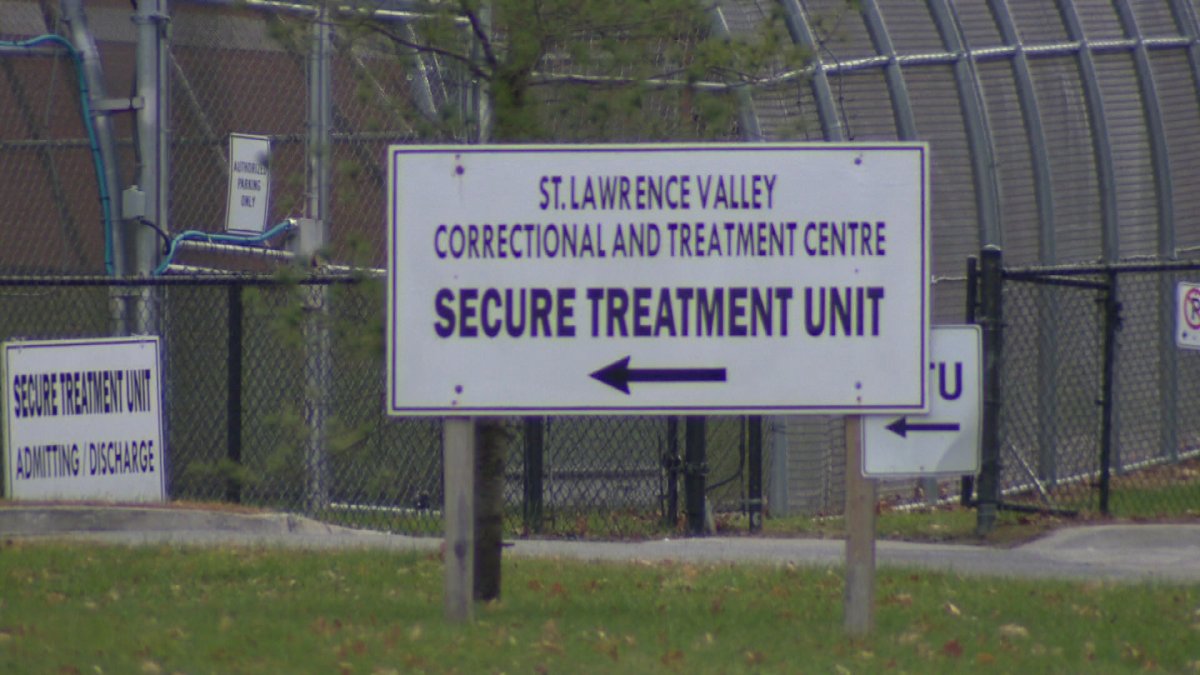What if there were a way to prevent more mentally ill women inmates from dying, and no one grabbed it?

Senator Bob Runciman has spent years pushing the federal government to adopt the strategy he pioneered as Ontario’s Public Safety Minister a decade ago – “with modest success, to say the least,” he smiles.
The St. Lawrence Valley Correctional and Treatment Centre’s Secure Treatment Unit in Brockville, Ont. is designed as a secure hospital rather than a prison with medical accoutrements: prison-level security on the outside, hospital design and function on the inside.
Thing is, the 100 beds at this facility are for male offenders. Its backers are trying to convince governments to build a similar, smaller facility for women whose needs and illnesses can be just as complex.
‘The model is there. It’s worked’
“The model is there. It’s worked,” Runciman insists. The unit is “set in a correctional setting, maximum security setting, but the primary focus there is health treatment – making sure that when these people are released, they’re not going to pose a danger to themselves or a further danger to society.”
A.G. Ahmed, Associate Chief of Forensic Psychiatry at the Royal Ottawa Health Care Group, has worked at both Saskatoon’s Regional Psychiatric Centre and the St. Lawrence Valley facility.
“If you look at a treatment facility, a forensic treatment facility like ours, you have everybody that is involved in the unit being a mental health professional,” Ahmed said. “You have appropriate responses, you have appropriate interventions.”
WATCH: Why psychiatric prisons aren’t helping sick patients
One criticism of Canadian prisons is that they’re ill equipped to care for ill inmates – even the facilities designed for serious mental illness have more deaths and assaults than any others.
“They can’t do it. They aren’t designed to do it. And I don’t think they want to do it. They don’t want to use alternative service delivery facilities,” Runciman said.
“There’s been nothing but, I think, significant resistance from the bureaucrats in correctional services.”
The difference partly lies in training, recognition of and approach to crises, Ahmed said. About 8,800 corrections officers have been through a two-day in-class program on mental illness, Corrections Canada says.
“If you look at individuals who have mental illness who eventually die in custody it may be as a result of lack of recognition and lack of treatment provision,”Ahmed said. “You can find that among the staff they do not recognize what is going on. … The focus really is punishment rather than treatment.”
- Trudeau tight-lipped on potential U.S. TikTok ban as key bill passes
- Canadian man dies during Texas Ironman event. His widow wants answers as to why
- Hundreds mourn 16-year-old Halifax homicide victim: ‘The youth are feeling it’
- On the ‘frontline’: Toronto-area residents hiring security firms to fight auto theft
You have “inadequate staffing, inadequate rehabilitation process, and the situation, unfortunately, deteriorates.”
Where the inmates are residents
Inmates at the Brockville Secure Treatment Unit – except they’re called residents here – can be referred from any provincial men’s prison; people in crisis get priority. They get a care plan on arrival. The parole system is the same as any Ontario prison.
“The STU is first and foremost a fully secured correctional institution, however it does differ from the majority of Ontario’s correctional facilities because it provides a more comprehensive mental health service to inmates with serious mental illness,” Ontario Ministry of Community Services and Correctional Care spokesperson Andrew Morrison said in an email.
It’s staffed with a complement of corrections officers and “the ministry has policies and procedures in place for dealing with inmate disturbances.”
There have been no deaths at the facility since at least 2008; coroners; records suggest there were two in the years prior.
Kevin Grabowsky, head of the Union of Canadian Correctional Officers, is more sceptical.
“We have psychologists, psychiatrists, psychiatric nurses.
“I don’t know what we’re not providing that one of those facilities provides that’s different.”
That’s what Michael Seto is trying to figure out. The Director of Forensic Rehabilitation Research at the Royal Ottawa is studying the St. Lawrence Valley site to determine what impact it’s having on individual offenders’ behaviour.
“One of the things we’re very keen to look at is … what is the recidivismm rate, what is the institutional misconduct rate in particular?”
Seto’s confident the issue of inmates with mental illness is on Corrections Canada’s radar – he just isn’t sure how they plan to act on it.
If inmates’ illnesses go untreated, he says, “they are going to cycle back to the world, maybe more likely to reoffend, more likely to get in trouble.”
‘This isn’t coddling. This is the rule of law’
Meantime, the people backing this model are insistent. They’ve been in talks at various stages with the provincial and federal government for years, trying to get them on board for a women’s facility.
Neither has bought in fully; the closest the federal government has come was this week, when it announced a pilot project with two beds for female inmates.
“Why so limited?” asks prison watchdog Howard Sapers. “Why’s it a pilot project? What is it CSC hopes to learn that they don’t already know?”
Ahmed’s encouraged by the two-bed commitment – but he’s holding out hope for something more significant.
“Having two beds limits the results. We’re going to try our best to incorporate treatment and adapt treatment,” he said. But “it will not give room for as much innovation.”
The federal government’s latest plan for inmates’ mental health is “comprehensive on paper,” Ahmed added. “My hope is that it will work.”
He’s also hopeful that, now that Ottawa’s buying in, the province will get on board, as well.
Ontario’s Ministry of Community Safety and Correctional Services “has no current plans to expand any of its existing operations,” Morrison wrote late last month.
“However, the ministry is exploring options to support female inmates in Ontario’s correctional system and would be willing to review any proposal put forward by the federal government.”
The lack of commitment hasn’t stopped the plan’s proponents. Runciman remains doggedly optimistic.
“I think something’s happening now. How significant, is my concern,” he said. “We may see some baby steps.”
The group’s latest business case, submitted in December, argues a secure treatment centre for women would create more than $2 in societal benefits for every dollar you put in: You’d save money in the prison, justice and health care systems. And if people are rehabilitated, you create taxpayers with jobs. (The estimated cost for a brand-new, 25-bed facility for women inmates would be about $337-million, including a full spectrum of services; that would provide an estimated $798-million in benefits)
“Most of these people, if they don’t die, will reenter our communities,” said Kim Pate, national head of Canada’s Elizabeth Fry Societies. “And the last thing we want is people coming out with more problems than when they went in.”
WATCH: ‘It’s a huge human cost, huge social cost. Huge financial cost, as well’
Some see the efforts as wasted, providing special treatment to serious criminals.
“When somebody is ill, you provide health services – there’s nothing coddling about meeting somebody’s healthcare needs,” Sapers argues. “These people are still under sentence, they’re still not going home at night. There’s no part of the sentence that’s been mitigated. What you’re doing is you’re meeting the human right and the legal right of provision of health care.”
“This isn’t coddling. This is the rule of law.”
With a report from Rebecca Lindell in Ottawa
NEXT: The interviews we didn’t get
Note: The headline on this article has been changed to reflect the fact that while Smith strangled herself, the coroner’s jury deemed her death a homicide, not a suicide.






Comments